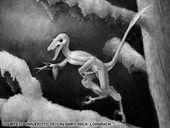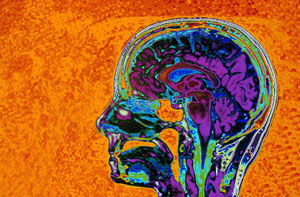Canadian researchers say they have discovered the smallest known North American dinosaur, a carnivore that roamed areas of the continent 75 million years ago and weighed less than most modern-day house cats.

© University of Calgary/Nick LongrichNick Longrich found the dinosaur's bones in storage at a museum and decided to analyze them.
Hesperonychus elizabethae, a 4.4-pound (2-kilogram) creature with razor-like claws, ran through the swamps and forests of southeastern Alberta, Canada, during the late Cretaceous period, the researchers said.
The diminutive dinosaur likely hunted insects, small mammals and other prey, perhaps even baby dinosaurs, said Nick Longrich, a paleontology research associate in the University of Calgary's Department of Biological Sciences.
"It's basically a predator of small things," Longrich said.

